Refreshing and delicious, Doogh is a traditional Persian drink made with yogurt, seasoned with mint and can be made with water or club soda. Plus a recap on the tradition of Sizdah Bedar (13 bedar).

The weather outside may or may not reflect it, but Spring is here! Perhaps your sinuses can feel it, with the new blossoms outside? This is my favorite time of the year, like a bear coming out of hibernation, I feel excited with the end of winter behind us.
I personally long for the warm weather and sunshine, which is probably why I love living in Southern California! And, if you are a reader of my blog, you know that the first day of Spring marks the first day of the Persian New Year, Nowruz.
Traditions of sizdah bedar
In previous posts, I have given you a brief history of Nowruz, dating back 3000 years. I have also discussed a pre-Nowruz celebration, Chahârshanbe Sûrî . In today’s post, I will tell you about another Nowruz celebration: Sizdah Bedar (13 bedar).
In Iran, the Nowruz celebration lasts for 13 days. Images constantly portrayed during these 13 days is The End and Rebirth, Good versus Evil. And, even in ancient times, the number 13 was considered unlucky.
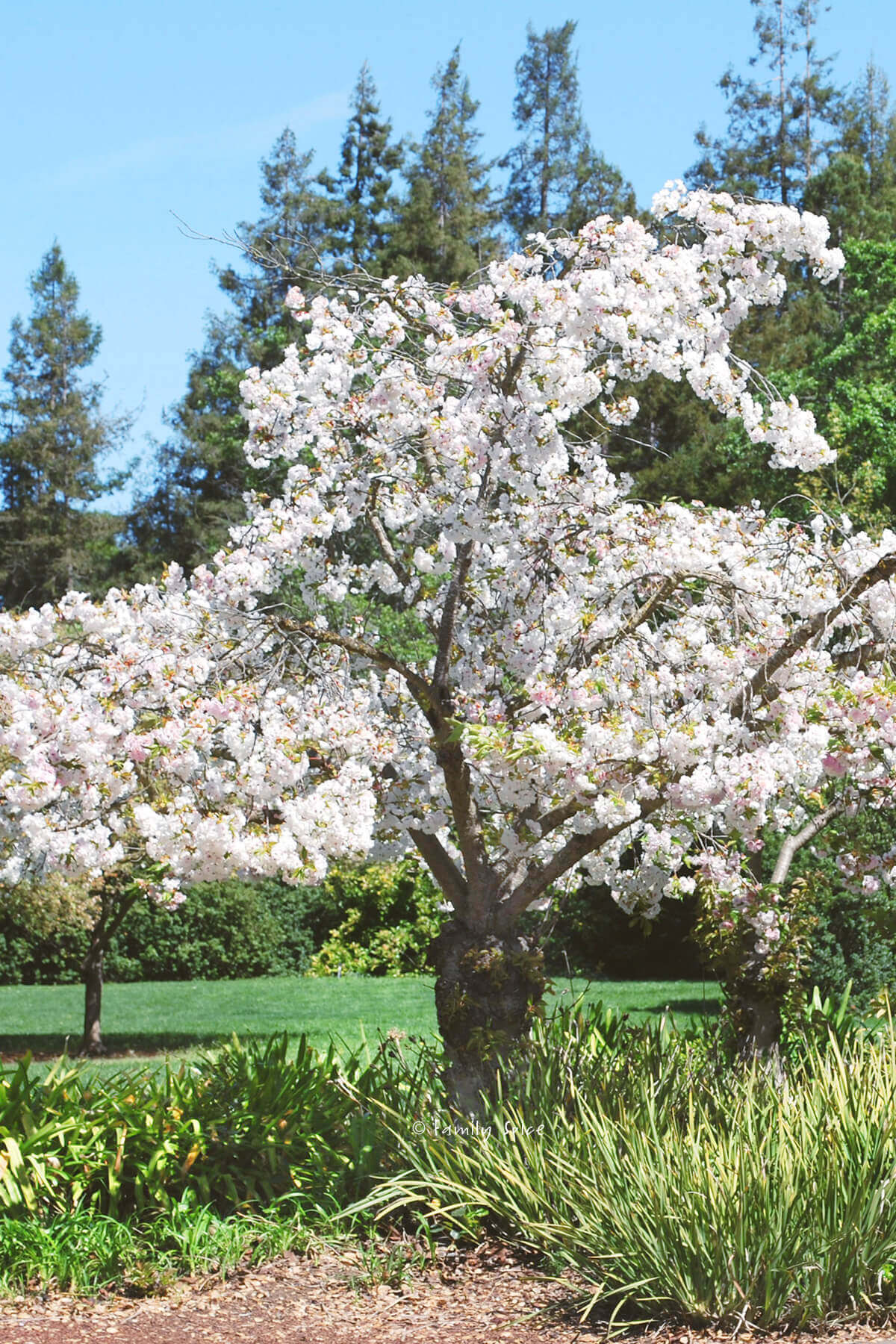
The translation for Sizdah Bedar is something like “Getting rid of 13.” It can also mean “13 Going outdoors.” Many historians believe this celebration came about when people felt that to cast away evil, they should fight the impulse to stay indoors on the 13th day of the new year.
By the 13th day of Favradin (the first month of the Persian new year), the family sabzeh grown for the haft sin is looking a little sad. This sabzeh is symbolic on the haft sin as it symbolically collects all the sickness and bad luck from the house. So, to ward off evil and bad omens, the sabzeh is casted off on this sizdah bedar.
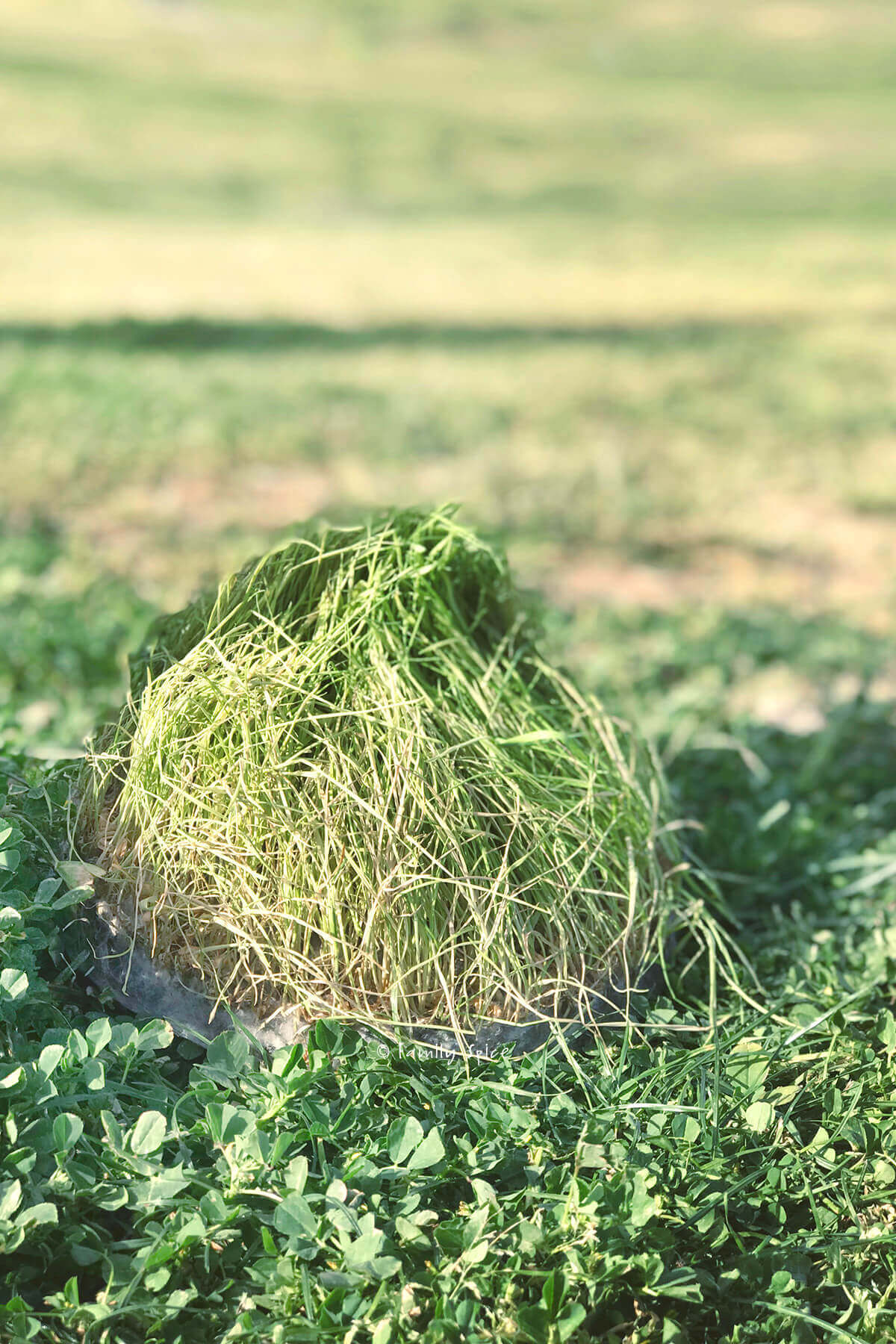
Another traditional act practiced while outdoors, although a bit outdated, is where the unmarried girls tie knots with the blades of grass, hoping to be married by next sizdah bidar. The knot represents love and the bond between husband and wife.
So, families spend the day outdoors. In modern times, you will find families gathering together in parks, by lakes or at the beach typically sharing a large meal that defies any image of an American picnic!
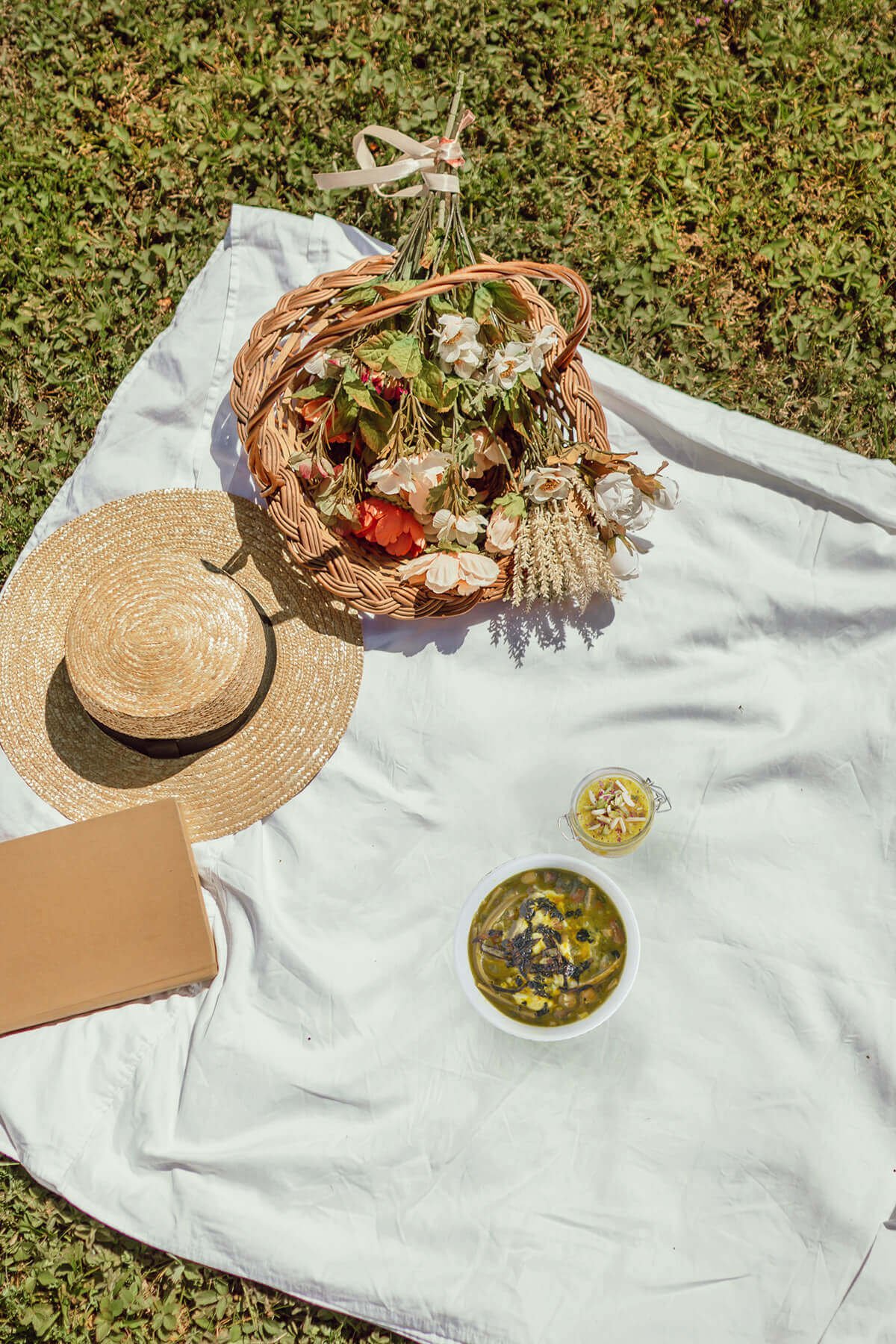
Pots of rice, khoresht (stews), ash-e reshteh (noodle soup) are lined up on picnic tables or on carpets laid over the grass. Pitchers of doogh, a yogurt drink mixed with herbs, is passed around and shared. It must be a sight to see for those unfamiliar with the tradition.
For dessert, cups full of golden sholeh zard is passed among family along with glasses of hot tea. Even today, here in the US, Persian rugs are taken to the park with family sitting together and sharing this feast together.
We sit, we eat. We laugh, we eat. We talk, we eat. The kids play, we eat. You get the picture.
Why you should try this drink
Yogurt is one of the staple foods in Persian cuisine. This is not the bland yogurt you find in the supermarket. Persian yogurt has a wonderful tartness to it that makes it so unique and so much more flavorful than mass produced yogurt.
Doogh is a Persian drink made with yogurt. And no, I’m not talking about a smoothie. Mixed with mint, yogurt is combined with water or club soda to make doogh. And it makes a refreshing drink to enjoy at sizdah bedar or any other day of the week.
Don’t think of it as drinking thick yogurt. It is a watered down yogurt drink with lots of flavor, a thinner savory yogurt smoothie. Sort of…
I especially love doogh with a plate of chelo kabob. Yum!
Ingredients needed
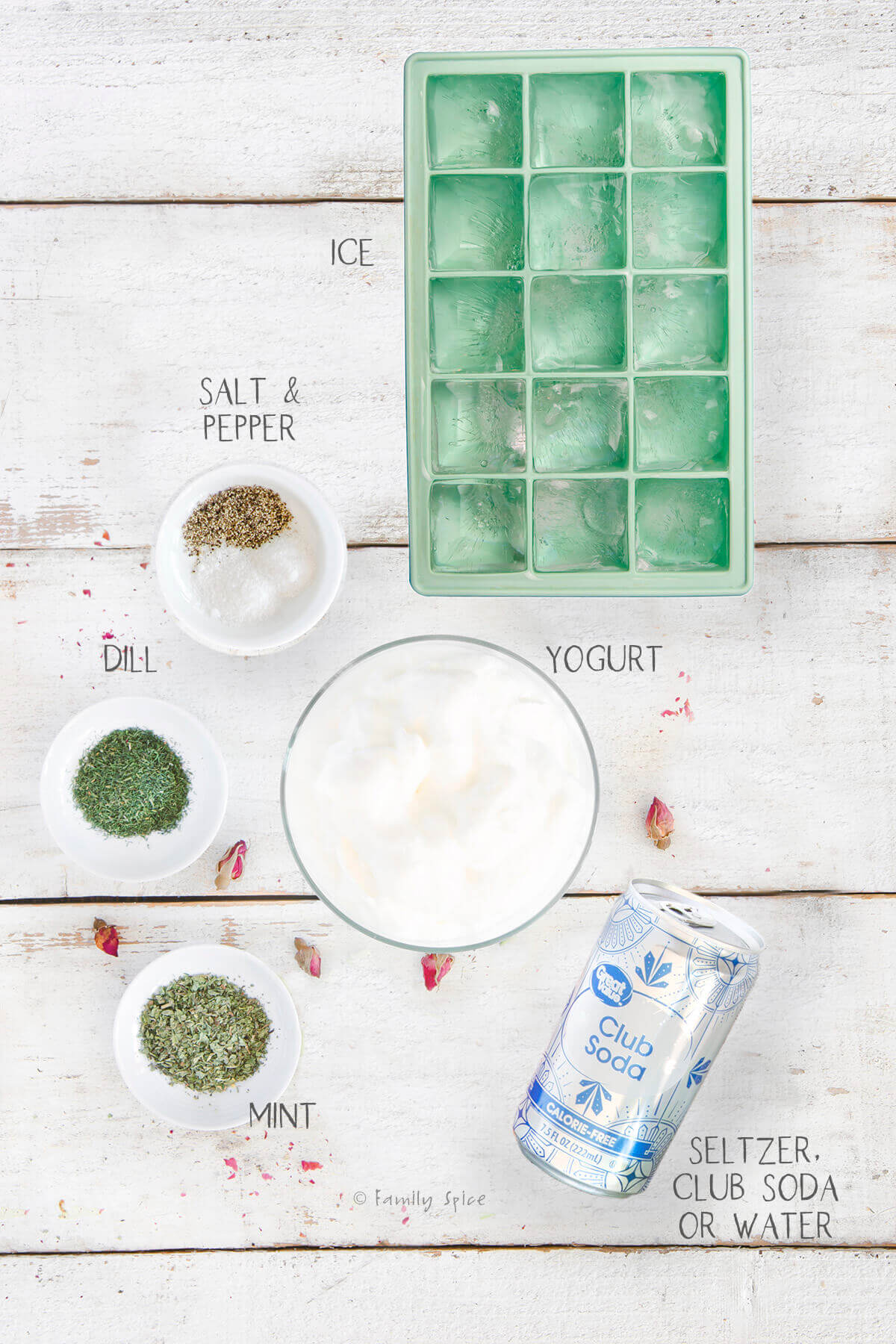
This post contains some affiliate links for your convenience (which means if you make a purchase after clicking a link I will earn a small commission but it won’t cost you a penny more)! Read my full disclosure policy
- Yogurt: Persian yogurt has a tang to it. If you cannot find any or don’t have a middle eastern market you can use thick Greek yogurt.
- Club soda or water: You can water down the yogurt with regular water. But many of us prefer a little carbonation and use club soda or seltzer water.
- Dried herbs: I prefer using dried herbs for doogh, but you can use finely minced fresh herbs. You can use just mint or a combination of mint and dill.
- Salt and pepper
- Ice: Because you want your drink ice cold!
- Garnish: I like to garnish my glass of doogh with fresh mint. You can also sprinkle in some crushed dried rose petals.
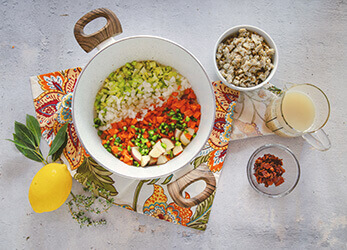
Tools to Use
Step-by-step directions
In a small pitcher whisk together yogurt, club soda, dried mint, salt and pepper. Fill two glasses with ice and divide dough evenly between the two glasses and garnish with chopped fresh mint.
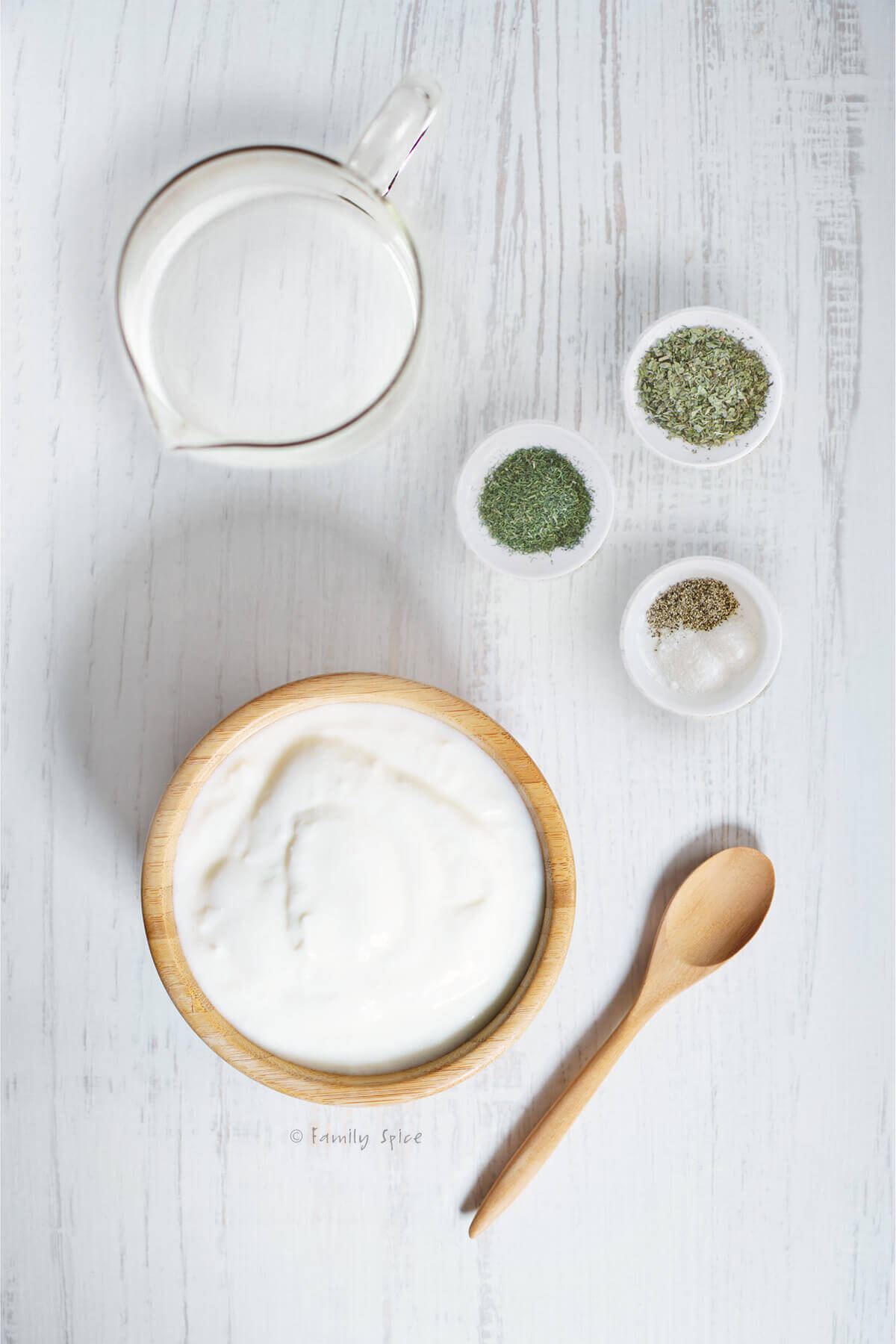
Expert tips and recipe FAQs
Homemade doogh is best when served right after making it, especially if you are using carbonated water or soda. Yogurt can last a month in the refrigerator, so you can mix it up any time you want.
If you find a middle eastern market, you can find Ab Ali’s bottled doogh and try it for yourself first!
Doogh is a persian yogurt drink mixed with club soda (or regular water) along with mint and/or dill. It is very refreshing and tangy. Unlike American yogurt, Persian yogurt is NOT sweet but is a little on the sour side. The salt you add helps balance the sour yogurt.

If you are enjoying my recipes, please sign up for my newsletter and get my free 28-day meal plan! You can also follow me on Instagram or Facebook.
Doogh (Persian Yogurt Drink)
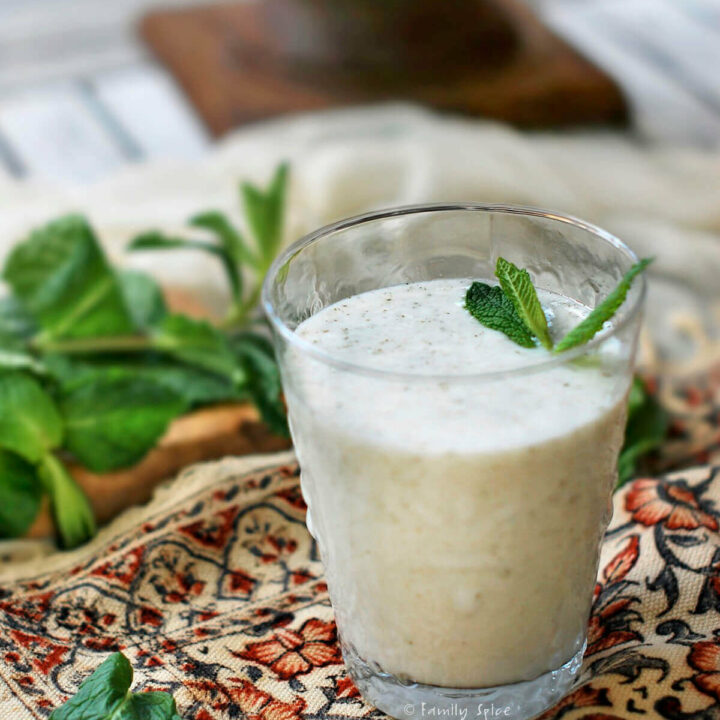
Refreshing and delicious, Doogh is a traditional Persian drink made with yogurt, seasoned with mint and can be made with water or club soda. Plus a recap on the tradition of Sizdah Bedar (13 bedar).
Ingredients
- 1 cup yogurt
- 1 cup club soda or water
- ½ teaspoon crushed dried mint
- pinch of salt
- pinch of ground black pepper
- 1 cup ice
- 1 TBS chopped fresh mint
Instructions
- In a small pitcher whisk together yogurt, club soda, dried mint, salt and pepper.
- Fill two glasses with ice and divide dough evenly between the two glasses and garnish with chopped fresh mint.
Nutrition Information:
Yield:
2Serving Size:
1 glassAmount Per Serving: Calories: 73Total Fat: 2gSaturated Fat: 1gTrans Fat: 0gUnsaturated Fat: 1gCholesterol: 7mgSodium: 154mgCarbohydrates: 8gFiber: 0gSugar: 8gProtein: 6g
PS If you try this recipe, why not leave a star rating in the recipe card right below and/or a review in the comment section further down the page? I always appreciate your feedback.
You can also follow me on Pinterest, Facebook or Instagram. Sign up for my eMail list, too!

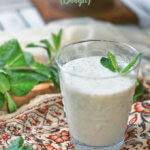
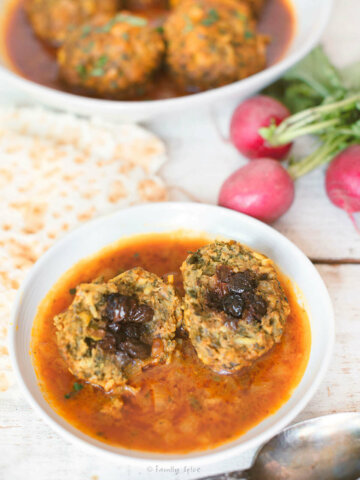
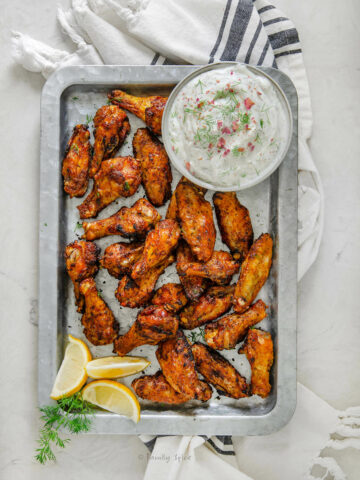
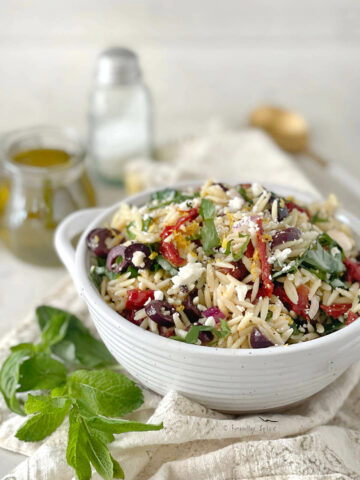

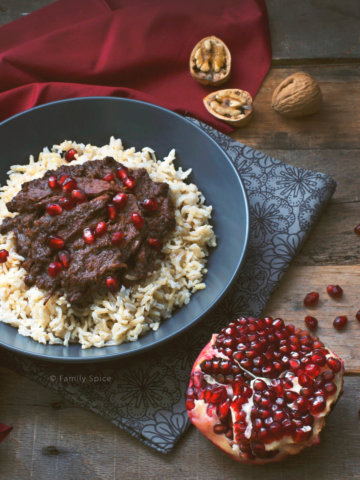
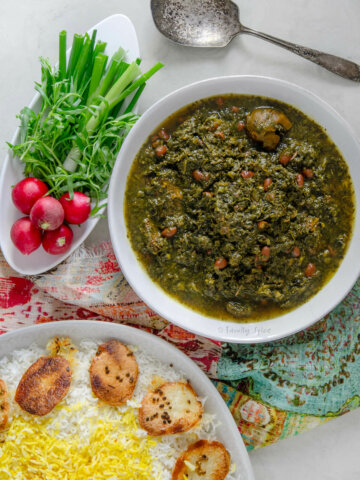
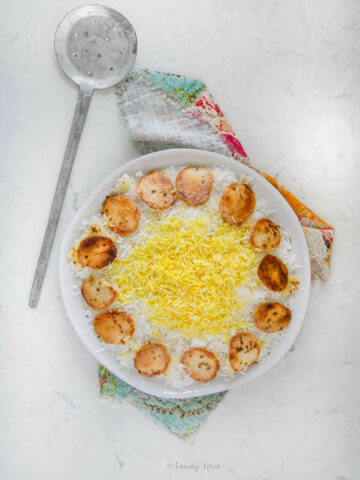
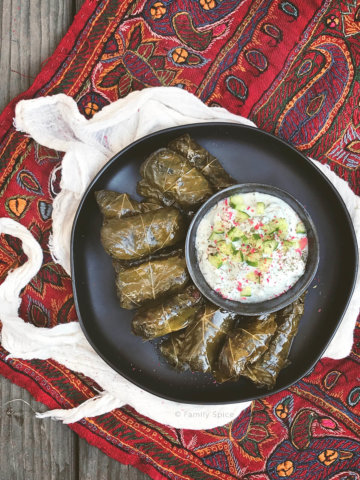
Thanks for a great post – much enjoyed this – well done & wishing you a lovely 2020 🙂
I am an old school Lebanese. I tried variations of hommos or years . By far, this is the best I enjoyed. Well done Ms Bashar, What is next on the menu?
please correct the “or” to “for”. Thanks
My girlfriend (Persian) and I (Indian) absolutely LOVE your website and have used it to make about 30 meals over the past year. We really value your creativity and energy for maintaining such a wonderful website of delicious foods! Thank you.
Very interesting and I learned something new. I don’t think we have any happy celebration that lasts 13 days in Japan! I enjoyed reading about the tradition of Sizdah Bidar (like the sound of this word) and your photos look really beautiful Laura! Enjoy your picnic. It’s pouring rain today in SF…